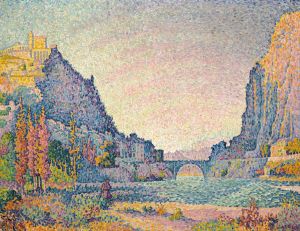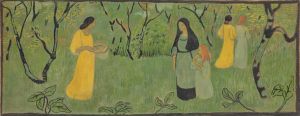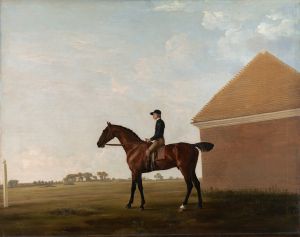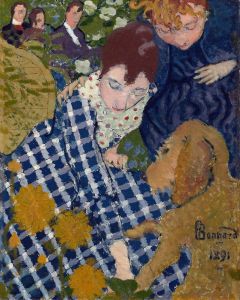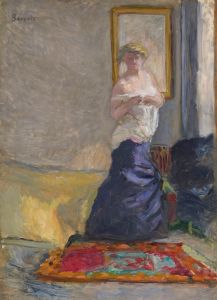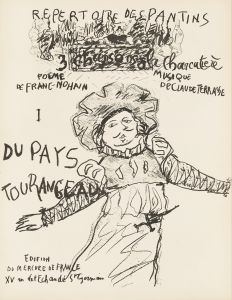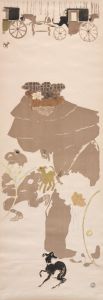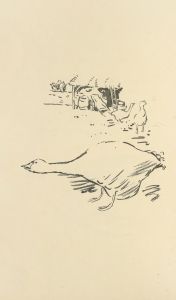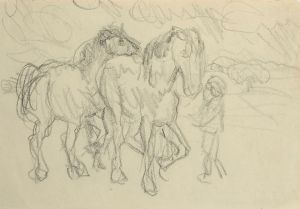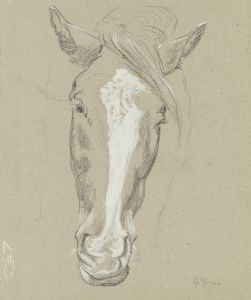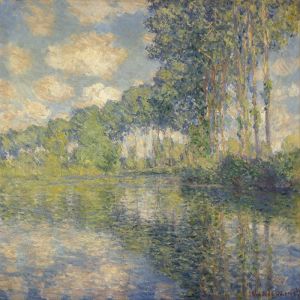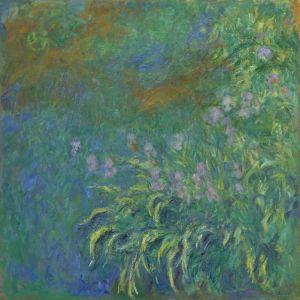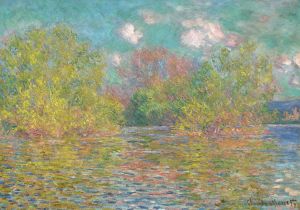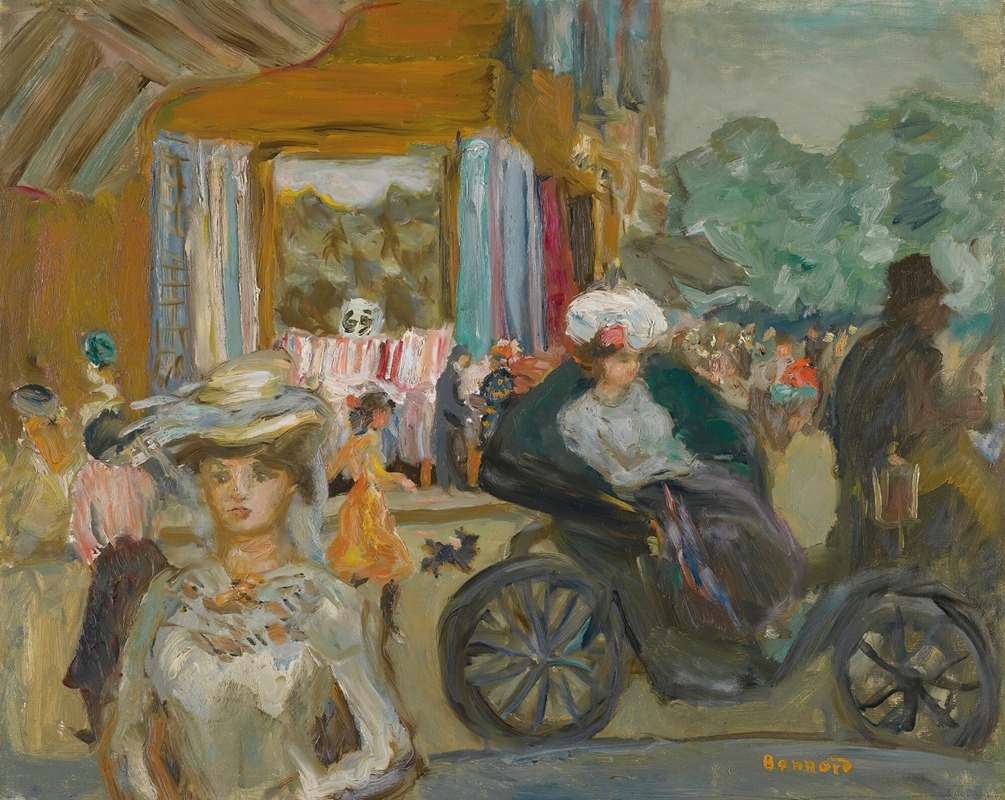
Le Fiacre
A hand-painted replica of Pierre Bonnard’s masterpiece Le Fiacre, meticulously crafted by professional artists to capture the true essence of the original. Each piece is created with museum-quality canvas and rare mineral pigments, carefully painted by experienced artists with delicate brushstrokes and rich, layered colors to perfectly recreate the texture of the original artwork. Unlike machine-printed reproductions, this hand-painted version brings the painting to life, infused with the artist’s emotions and skill in every stroke. Whether for personal collection or home decoration, it instantly elevates the artistic atmosphere of any space.
Pierre Bonnard was a French painter and printmaker, known for his vibrant use of color and his innovative compositions. He was a founding member of the Post-Impressionist group of avant-garde painters known as Les Nabis, which included artists like Édouard Vuillard and Maurice Denis. Bonnard's work is characterized by its emphasis on capturing the essence of a moment, often through intimate domestic scenes and landscapes.
"Le Fiacre" is one of Bonnard's notable works, painted in 1895. The painting depicts a horse-drawn carriage, known as a fiacre, which was a common mode of transportation in Paris during the late 19th and early 20th centuries. This piece is a testament to Bonnard's ability to capture the bustling life of the city with a unique perspective that combines both movement and stillness.
In "Le Fiacre," Bonnard employs his signature style of using bold colors and loose brushwork to convey the vibrancy and dynamism of urban life. The painting is not just a literal representation of a carriage but an exploration of the interplay between light, color, and form. Bonnard's use of color is particularly noteworthy; he often applied paint in a way that allowed colors to interact on the canvas, creating a sense of depth and movement.
The composition of "Le Fiacre" is carefully constructed to draw the viewer's eye across the canvas. The carriage is placed slightly off-center, creating a sense of motion as it appears to move into the space of the viewer. The background is filled with abstracted forms and colors, suggesting the hustle and bustle of the city without detailing every element. This approach allows the viewer to focus on the central subject while still feeling the energy of the surrounding environment.
Bonnard's work, including "Le Fiacre," is often associated with the Symbolist movement, which sought to express ideas and emotions through symbolic imagery and color. While Bonnard's paintings are grounded in reality, they often transcend the literal to evoke a mood or atmosphere. In "Le Fiacre," the use of color and form creates a sense of immediacy and presence, inviting the viewer to experience the scene as if they were part of it.
Throughout his career, Bonnard remained committed to exploring the possibilities of color and composition. His work has been celebrated for its ability to capture the fleeting moments of everyday life with a sense of intimacy and warmth. "Le Fiacre" is a prime example of his skill in transforming a simple scene into a vibrant and evocative work of art.
Today, Pierre Bonnard is regarded as one of the leading figures of modern art, and his paintings continue to be studied and admired for their innovative use of color and form. "Le Fiacre" remains an important piece within his oeuvre, exemplifying his unique approach to capturing the essence of urban life in turn-of-the-century Paris.





